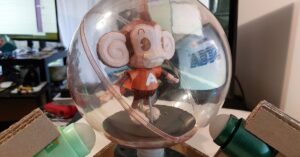Earlier today, Fisker finally did what has seemed inevitable these past few turbulent months: declared bankruptcy.
June 18, 2024:
“Like other companies in the electric vehicle industry, we have faced various market and macroeconomic headwinds that have impacted our ability to operate efficiently,” the company said in a statement. “After evaluating all options for our business, we determined that proceeding with a sale of our assets under Chapter 11 is the most viable path forward for the company.”
For anyone paying close attention, this isn’t that surprising. Fisker has been sounding the warning about its dwindling cash stockpile for months. It did all the things you’re supposed to do to rein in costs. It laid off over 15 percent of its workforce, slashed prices, and cast about for an investor who could possibly rescue the struggling EV company — but without success.
“We have faced various market and macroeconomic headwinds that have impacted our ability to operate efficiently”
In some respects, Fisker’s bankruptcy is a product of this particular moment, in which EV sales growth has slowed, and companies that have bet everything on pure battery-electric vehicles are finding themselves in a cash crunch.
But in another light, Fisker is an example of a company that tried to adhere to the Tesla playbook but still failed to replicate Elon Musk’s success. Henrik Fisker, who made his name as a designer for BMW before starting his own car company, certainly had more professional bona fides than Musk did when he first acquired Tesla. But Fisker lacked Musk’s showmanship, his ability to inspire people, and — most importantly — his ability to bullshit his way out of tough situations.
It’s not for lack of trying. In the early days of Fisker, Henrik proved to be very good at making wild-sounding promises that helped generate a lot of excitement and buzz about his company. In 2018, Henrik claimed to have solved one of the “holy grails” of EV production with the creation of a real solid-state battery. (These are batteries that don’t use liquid electrolytes to move energy around. Instead, the cells are made of solid and “dry” conductive material.)
Fisker said that his company was just a few months away from a final design of a solid-state battery. But it was clear almost right away that the company wouldn’t be able to deliver on its promise. By early 2019, the startup postponed a planned sports car that was based on the solid-state technology and pivoted to the Ocean SUV, which uses a more common lithium-ion battery. Two years later, Fisker completely abandoned its plan to develop a solid-state battery.
“It’s the kind of technology where, when you feel like you’re 90 percent there, you’re almost there, until you realize the last 10 percent is much more difficult than the first 90,” Fisker told former Verge reporter Sean O’Kane (who broke most of the stories about the company here at The Verge and has continued that streak now at TechCrunch) in 2021.
But if Fisker was chastened by his failed attempt to achieve a battery breakthrough, he didn’t show it. Months after admitting defeat, he announced a new fantastical project: an electric Popemobile made by his company. The CEO claimed to have had a “private audience” with Pope Francis and that his company would make a custom electric SUV to be used for official papal transport in late 2022.
What he didn’t say was that much of his story was completely embellished. Henrik had “presented” the idea of an electric Popemobile to Pope Francis as part of a meet and greet that lasted a little over a minute, and the Holy Father gave no indication of his approval.
The CEO claimed to have had a “private audience” with Pope Francis
There have been other half-baked ideas, including a manufacturing partnership with Volkswagen and a deal with iPhone maker Foxconn, neither of which came to fruition. And when Fisker finally got around to actually making cars, the first (and likely only) being the Ocean SUV, more issues seemed to surface every week. There have been a host of software and mechanical problems as well as internal issues around its nonexistent customer service division and inability to keep track of the money it made. YouTuber Marques Brownlee gave the Ocean one of his worst reviews ever.
All the while, Fisker kept sticking to the Tesla model in the hopes that it could replicate its success. It tried to sell its vehicles directly to consumers like Tesla does, eschewing the franchised dealership model used by most legacy automakers, but then had to backtrack after finding that its costs exceeded its projections.
But Henrik could never hold people’s attention the way that Musk does. And, according to TechCrunch, he had a much different idea of what constituted a “cool” design. For Musk, it was a minimalist design and a preponderance for extraneous software features, like video games, misnomered driver assist, and sophomoric sound effects. For Henrik Fisker, it was ticky-tacky stuff like wheel spacers, which just ended up mucking up the assembly process.
This is bankruptcy number two for Henrik Fisker. His first startup, Fisker Automotive, went out of business in 2013 based on many of the same problems: quality issues and financial mismanagement. Now, with two bankruptcies under his belt, it may be time to admit that the Tesla playbook isn’t exactly foolproof — especially when your name isn’t Elon Musk.


























